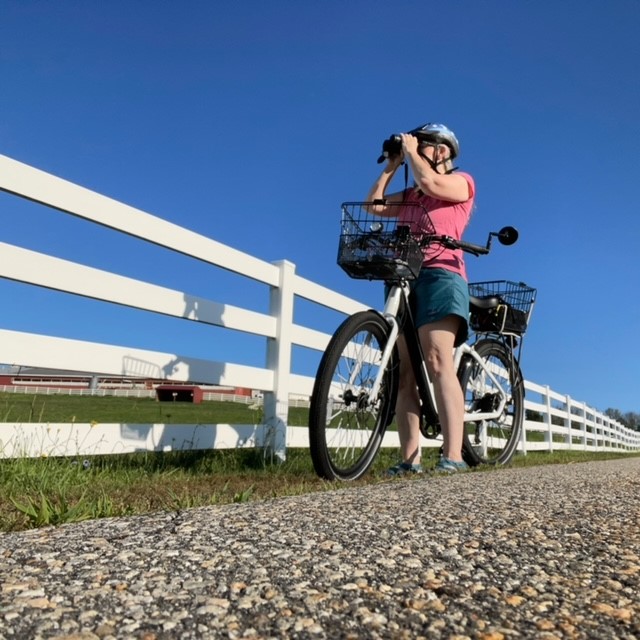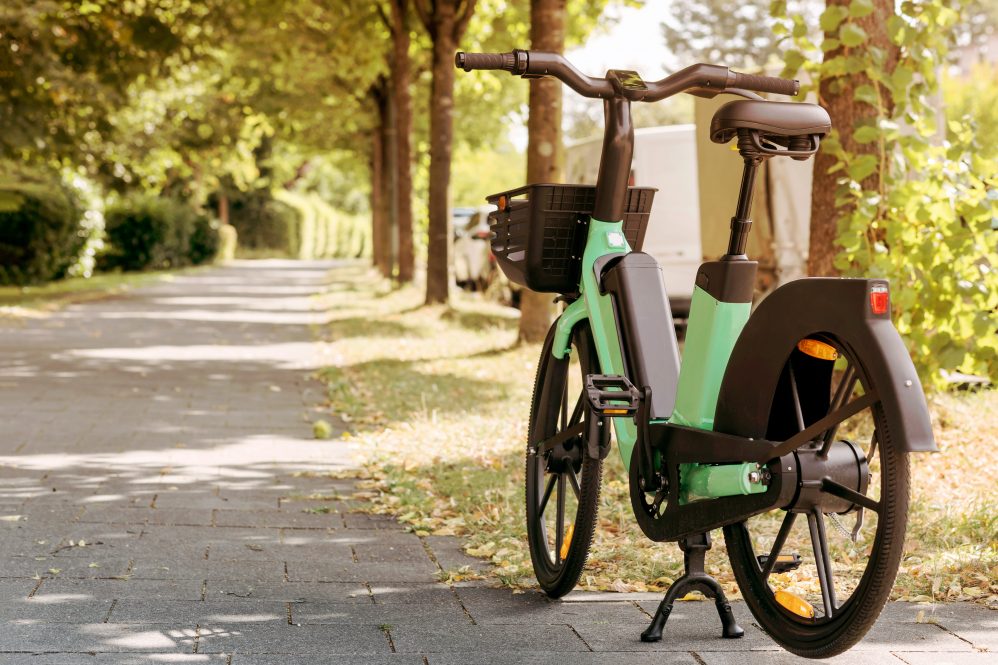The Connecticut Hydrogen and Electric Automobile Purchase Rebate (CHEAPR) program will soon expand to include incentives for electric bicycles. The program is aimed at increasing the availability of sustainable transportation options for state residents by lowering the purchase or leasing costs for these technologies.
Connecticut Institute for Resilience and Climate Adaptation (CIRCA) Legal Research Fellow Louanne Cooley is also a bike advocate and a member of the Engineering for Human Rights Initiative (EHRI). She met with UConn Today to help answer questions about the CHEAPR program and the importance of affordable, sustainable transportation.
Can you explain what CHEAPR is?
CHEAPR is a state rebate program managed by the Connecticut Department of Energy and Environmental Protection (DEEP) designed to incentivize the adoption of electric vehicles and cut greenhouse gas emissions from the transportation sector to mitigate climate change due to human activity and improve air quality.
In 2022, the Connecticut legislature expanded the program to include electric – or “e-bikes” – in addition to electric and hydrogen cars and trucks. Connecticut will be one of only four states offering statewide e-bike rebates to all residents starting this summer. The e-bike rebate program is via application through the CT DEEP website and is scheduled to open on Wednesday, June 28th.
State residents over 18 can apply for a $500 voucher to be used on a qualifying e-bike at a brick-and-mortar store. The CHEAPR e-bike website has a list of bikes that meet the program standards. In addition, people living in certain locations or meeting income requirements can qualify for up to an additional $1,000 voucher making some e-bikes free or very low cost.
How is this program hoping to address environmental justice and other sustainability concerns?
When the legislature developed the CHEAPR program, they were very mindful of equity considerations. Even with vouchers, most electric vehicles (EVs) are out of reach for many households. But e-bikes are far more affordable than EVs.

For those living in environmental justice or distressed communities (definition of these terms, a list, and a map are available on the DEEP website) the standard $500 voucher is increased to up to $1,500, more than the cost of some e-bikes on the approved list. While e-bikes will not solve this problem for all, they are an affordable option for many, and vouchers are a low-cost way for the state to provide a transportation option for everyone, especially for those in distressed communities that may lack public transit options.
The program aims to increase air quality by reducing pollutants from internal combustion engine vehicles. It’s important to note that environmental justice and distressed communities have statistically worse air quality with higher rates of asthma than other areas. Expanding the CHEAPR program to include e-bikes increases the reach of the program, hopefully reducing greenhouse gas-generating car trips while also expanding transportation access in those communities with historically fewer options.
How can other transportation options like active transportation and e-bikes help us live more sustainably?
For those able to use “active transport,” there are multiple health, social, and societal benefits. Biking is an efficient mode of transportation accessible to a wide range of ages and abilities. E-bikes increase accessibility by using a small electric motor to provide a boost when needed, increasing biking range and essentially flattening hills. Many people who no longer use a traditional bike find that the added boost from a motor makes biking possible again. Increased bike use correlates with decreased car use, lowering greenhouse gas emissions.
There are other benefits, too. People who bike more see increases in physical and mental health, including reduced heart disease risk, increased stamina, even lower rates of depression, and greater social connectivity. For those struggling to find ways to fit exercise into their lives, commuting to work or doing errands via bike is a way to make that exercise part of a routine. For commuters, an e-bike is a great option because one can use the motor assist to avoid arriving at work or school sweaty. And for people like me who find they no longer have the stamina to keep up on long rides on a regular bike, an e-bike still lets me go out on family rides in the neighborhood and explore trails around town. I have a trailer for my bike so I can ride to the grocery store, do errands, and haul materials. Some e-bikes are built for cargo. If you go to New York or Boston, you’ll see most delivery is now done via e-bike, reducing transportation traffic and auto emissions.
What are some other options for transportation around campus or around our region?
One way people can integrate active transport into their lives is to use it for “last mile” connections combined with other public transportation options. For example, UConn’s campuses are close to many mass transportation options, reducing the need for car use, but not always eliminating it. While students at UConn and other colleges in Connecticut can get a U-Pass allowing them to ride most public buses and trains in the state for free, if you combine that with an e-bike or scooter, it’s possible to greatly extend your car-free range. Both the WRTD and CTtransit buses serving the Storrs campus can accommodate bikes on front racks.
UConn Recreation also has a cycle share program where you can rent bikes, locks, and helmets.
For more information on using public transit options and combining them with active transport like bikes or scooters, see the CTrides website for tools and ideas on how to drive less and access public transportation throughout the state.
CIRCA’s mission is to help increase the resiliency and sustainability of Connecticut’s communities. The experts at CIRCA connect residents and community members with the resources and knowledge we need to address issues arising from climate change. To learn more about what CIRCA does visit their website.



